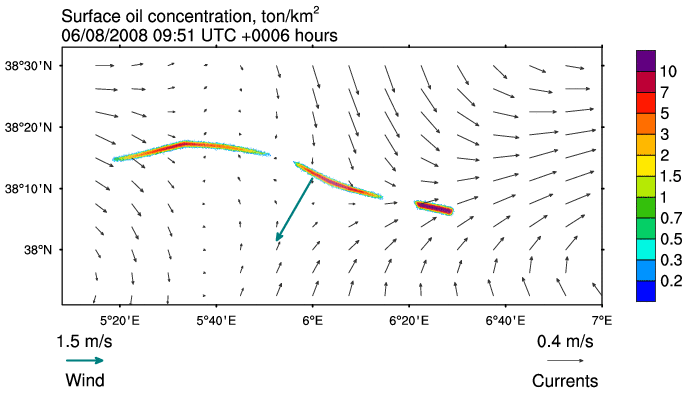Model Description
MEDSLIK-II simulates the transport of the surface slick governed by the water currents and by the wind. Oil particles are also dispersed by turbulent fluctuation components that are parameterized with a random walk scheme. In addition to advective and diffusive displacements, the oil spill particles change due to various physical and chemical processes that transform the oil (evaporation, emulsification, dispersion in water column, adhesion to coast). MEDSLIK-II includes a proper representation of high frequency currents and wind fields in the advective components of the lagrangian trajectory model, the introduction of the Stokes drift velocity and the coupling with the remote-sensing data.
Input and Output
MEDSLIK-II requires as input the oil spill data, the wind field, the sea surface temperature and the three-dimensional sea currents. MEDSLIK-II can make use of atmospheric wind and oceanographic fields (i.e. currents, temperature) from several different sources. The oil spill data required to define a numerical oil spill initial condition are: location, time and area of the spill, as well as the age of the oil spill from initial arrival in the sea. This information can be easily provided to MEDSLIK-II by satellite monitoring systems MEDSLIK-II produces as output the oil properties evolution and the position, every hour and for the next days, of the surface, dispersed oil and of the oil arrived on the coasts.
 |
 |
Some Output Example
 |
 |